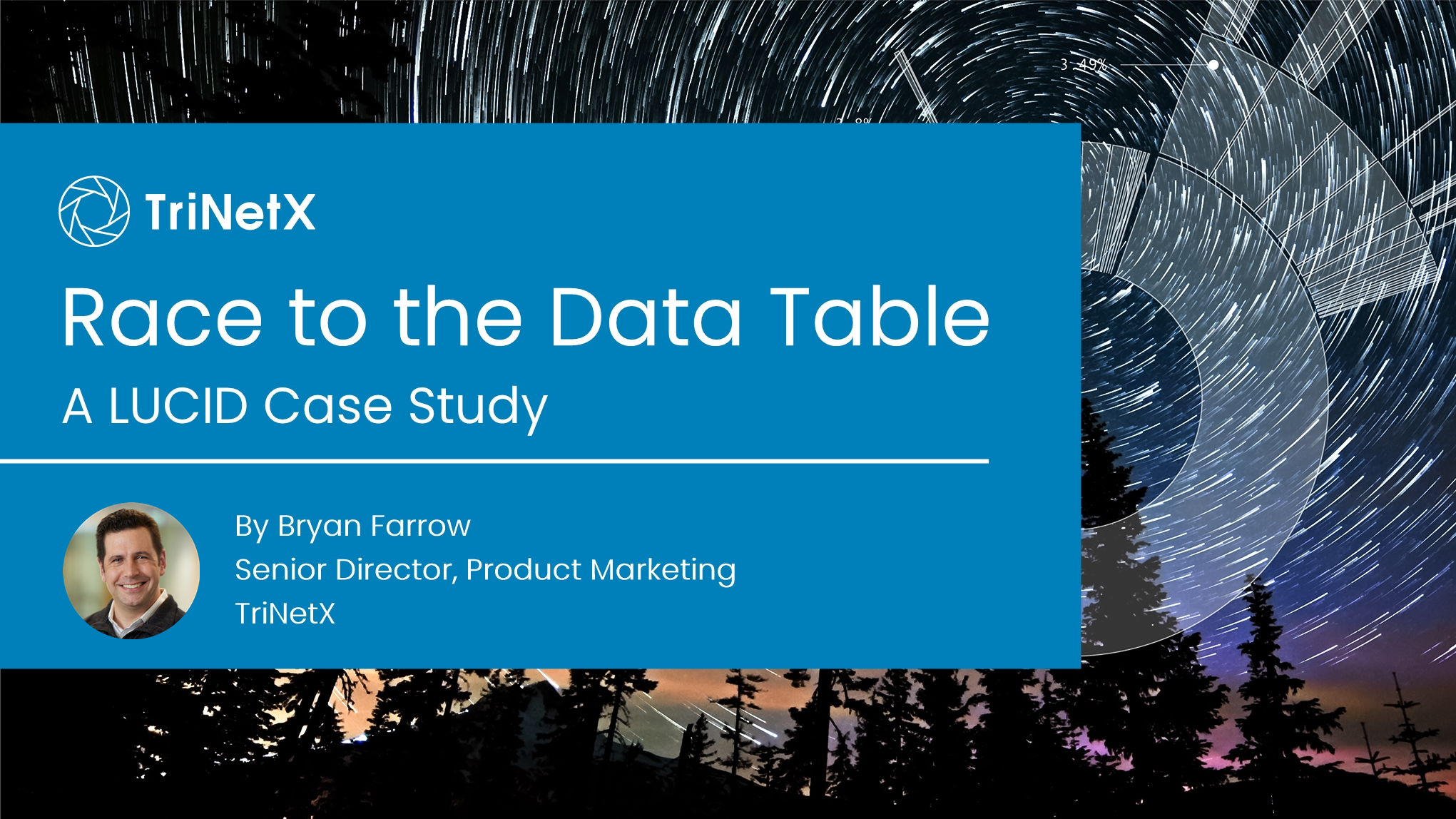
Anne M.*, Senior Quantitative Scientist within the Real World Data (RWD) team in a healthcare company, faced a deadline. To support drug testing for a diagnostic product, Anne had just three weeks to quantify and rank order the use of hundreds of the most common non-topical drugs administered to inpatients. Two stratifications—one for inpatient setting (critical care and general ward) and one for age group (neonate, pediatric, and adult)—meant her analysis would yield six lists. Anne knew that only large, representative, and well-defined cohorts of real-world patients would suffice to paint a true picture of drug utilization. She also realized she could not afford any delays in getting the data behind those cohorts into a powerful, familiar platform for analysis.
Anne had the skills and plan to succeed. What she needed was the right support team and technology. So she contacted TriNetX.
“The analysis itself is straightforward and descriptive,” she explained. “I’d like to work together to define these cohorts carefully before running even simple statistics.” The TriNetX Clinical Science team mobilized to assist Anne in building the queries to find her cohorts on our live platform. “Without the personally identifying information of birth date, it can be challenging to draw a large sample of newborns.” Fortunately, Anne got the help she needed from two clinical and informatics pros at TriNetX, Kayla Delano, Senior Clinical Analyst, and John Doole, PharmD, MFA, Director of Informatics. “Kayla and John showed me how certain CPT codes could serve as markers for the neonatal cohort, as some procedures are performed only on newborns,” claimed Anne. “They also helped me ensure I’d have drug descriptions and classes and not just code when it came time for my team to review the hundreds of medications in use.”
After confirming that the records contained ample medication data, it was time to deliver Anne her dataset. That’s when an idea struck Jeff Graham, Vice President of Real-World Data and Innovation at TriNetX. “I wanted Anne to have her data but not the burden of downloading and uploading an enormous dataset, which can tax even the most responsive of in-house technical teams. I knew speed was crucial. So I introduced Anne to LUCID.”
Anne liked what she saw: a flexible notebook environment that supported both of her go-to coding languages, SQL and R. Since LUCID was connected to TriNetX’s live platform, Anne could have her data staged and ready for analysis in hours rather than weeks. “Our internal process of ingesting the data I needed would take a few weeks. I didn’t have that time,” Anne recalled. “The combination of fresh data and near immediate availability was exactly what I needed.”
Anne built her tables in LUCID, with a row for every drug and columns for RxNorm code, product class, number of patients administered that drug, and their percentage makeup of the background cohort (e.g. neonates in a critical care setting). Although she performed this task with SQL, Anne quickly recognized the value that LUCID’s multilingual proficiency could add to a slate of similar and more advanced projects. “I wouldn’t have to spin up a new virtual machine every time I needed to work in Python, SQL, or R. It’s all at my fingertips.”
Anne met her deadline, giving her stakeholders the insight they needed for drug testing. While the benefit may not be realized for some time, the months saved at this leg of the development journey translate to more patient lives enriched down the line should the new product prove safe and effective. In the meantime, Anne can use the time she saved to deliver even more of her insight to colleagues. That’s a victory TriNetX gets to celebrate every day.
* Name has been fictionalized
